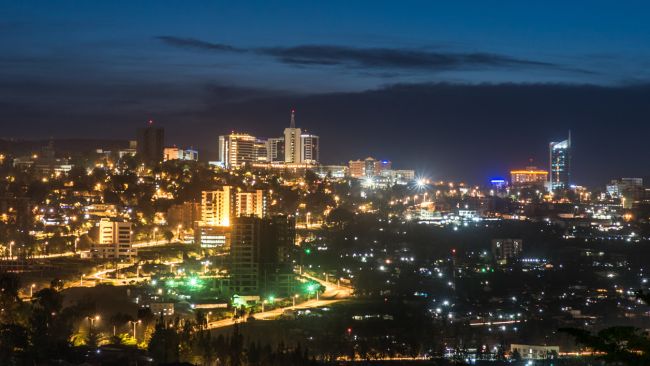Rwanda’s Culture, Language, Customs, and Traditions

Rwanda, also called Le Pays des Mille Collines in French, the “land of a thousand hills,” is famous for its unique topography and breathtaking scenery. This article explores the uniqueness of the Rwandan culture, language, and people, distinguishing them from other African countries despite their small population and country size.
Rwanda is located south of the equator and east of Lake Kivu, one of Africa’s Great Lakes. It is bordered by Burundi, the Democratic Republic of the Congo, Tanzania, and Uganda and covers an area of 26,338 km.
Rwanda Population
 Rwanda has grown to be one of the most liked African countries and has emerged as the cleanest country in Africa several times since clinching the position first in 2008.
Rwanda has grown to be one of the most liked African countries and has emerged as the cleanest country in Africa several times since clinching the position first in 2008.
With a budding population of 13,848,852 based on recent estimations, they rank 27-29 on the list of most populous African countries. They have increased their GDP following rapid industrialization due to a successful government policy and the economic boom in the early 2000s.
The population of the country is split between the three main tribes of the country: Hutu, Tutsi, and Twa, interestingly, most indigenous people of the nation do not call themselves “Rwandan,” instead they call themselves by their tribe’s name, which is a result of the genocide that happened in 1994.
- The Hutu tribe is the largest in Rwanda, making up about 84-90% of the country’s population. It is essential to note that Hutu or Abahutu is a Bantu ethnic or social group native to the African Great Lakes region.
- Tutsi, or Watutsi or Abatutsi, are of Nilotic origins and also a tribe of the warrior caste of Rwanda, making up about 9-15% of the country’s population. They are one of the tallest tribes in Africa and predominantly Christian.
- Twa, the forgotten tribe of the pygmy people, one of the descendants of the original inhabitants of the equatorial rainforest, make up barely 1% of the Rwandan people.
Religion
As a country, one of its core values is its strong sense of community and religion plays a significant role in shaping Rwanda’s social and cultural identity.
Rwanda is predominantly Christian, with over 44% of the population identifying as Roman Catholic and 26% as Protestant. Islam, indigenous African religions, and a small Jewish minority are among the other religions practiced in Rwanda.
The Roman Catholic Church has been essential in Rwandan history and society since missionaries arrived in the late 1800s. Today, the Church operates numerous schools and hospitals nationwide and participates in various social and charity initiatives.
Rwanda’s Protestant churches are primarily Anglican, Presbyterian, and Adventist, with an increasing number of Pentecostal and charismatic congregations. In addition, several of these churches have built schools, hospitals, and other social services in their communities.
A tiny but growing number of Rwandans, primarily in urban areas, follow Islam. There are also modest Hindu and Buddhist groups in the country.
National and Local Languages of Rwanda
There are four official languages in Rwanda, of which the highest percentage speaks Kinyarwanda. Here is a broader analysis of the languages of the country.
- Kinyarwanda is a Bantu language and is the most widely spoken in the country, with approximately 12 million speakers. It is a member of the wider Niger-Congo language family, which contains over a thousand diverse languages spoken throughout sub-Saharan Africa. Nearby Bantu languages Kirundi and Swahili extensively impacted the language.
The language is taught in schools nationwide, and attempts to improve and standardize its writing system and grammar are ongoing.
- French was established as an official language and is still extensively spoken in Rwanda, particularly in government, business, and education.
- English was included as an official language in Rwanda in 2008. It is primarily utilized in education, business, and international affairs, and its importance is growing as Rwanda attempts to establish relationships with the English-speaking world.
- Swahili is spoken by less than 1% of the Rwandan population, majorly in the eastern and southern regions. It is a primary regional language used for communication and trade and might be valuable for travelers and businesses.
Family Life in Rwanda
In Rwanda, as in most African countries, the extended family is highly valued, and it is common for numerous generations to live in the same household. Elders are highly respected and are crucial to family and community decisions. Children are likewise highly valued and frequently viewed as a source of pride and delight for their parents and grandparents.
Traditionally, family life in Rwanda is one of the most critical parts of the culture. The Rwandan word for family is “Inzu” a Rwandan family is made up of a husband, one or more wives, and children.
The umuryango is the second largest family unit after the inzu. It comprises multiple Inzu who can trace their ancestors back five or six generations to the same male ancestor; a Rwandan must marry outside of their umuryango.
Arts and Architecture in Rwanda
A lot of the traditional heritage of the older Rwandan empire revolves around songs, dances, and paintings, most of which were made to emphasize the supremacy of the Tutsi tribe until after independence, which brought some new culture to the Hutu tribe. Below are some of the remaining cultural and artistic relics of the country:
- Ikinimba: is the traditional music of Rwanda, and it is performed using traditional instruments such as the inanga (a type of zither), the umuduri (a kind of harp), and the ikembe (a type of thumb piano).
- Imigongo: a one-of-a-kind art style that decorates walls with geometric patterns and decorations produced from cow excrement. It is an art form that has been mastered and is still widely practiced today.
- Intore: is a traditional Rwandan dance performed by highly skilled dancers dressed in colorful costumes, and it is performed in three(3) forms-a heroes dance by men, a Ballet type by women, and finally, Drum solos– and this is a significant part of the culture.
- Umushayayo: also called the Dance of Women, signifies and showcases the elegant dance of the plethora of animals in the country. It is referred to as the courtship dance between males and females.
Rwanda Food
A landlocked country, which serves as home to a large amount of unique wildlife and cultural diversity, the uniqueness of Rwandan cuisine stems mainly from the fact that the majority of dishes are made of fresh farm ingredients, which guarantee top nutrition, and here are some of the dishes listed below.
- Igihembe (Red Bean Stew): red beans have been one of Rwanda’s most important crops for almost two centuries.
- Isambaza (Haplochromis fish): Isambaza has been the hallmark meal of Western Rwanda for years. These are relatively small fish, measuring no more than 10 centimeters in length. When fried and seasoned with salt, they are served as an appetizer.
- Isombe: a dish from mashed cassava leaves frequently flavored with onions, garlic, and peanut butter. Beans, plantains, or meat often accompany it.
- Ugali or Posho: a cornmeal porridge and sweet potatoes. This is a Rwanda staple and the most widely consumed food in Rwanda. These starchy dishes are typically accompanied by meat or veggies.
Rwandan Fashion
The Rwandan Fashion scene was predominantly traditional until the economic boom of the early 2000s, which birthed the addition of more western and modern styles.
Rwanda is particularly renowned for its colorful and bold style and also for the use of traditional materials and techniques in modern designs; examples include:
- Kitenge: this African wax print fabric gained popularity for its bright colors and beautiful patterns, which are the fabric’s signature and are often used to signify Africa.
- Umushanana: is the traditional attire for women from Rwanda and Burundi. It consists of a long skirt gathered at the hips, a bustier, and a stole draped over one shoulder
- Agaseke: a traditional Rwandan basket constructed of sisal, a fibrous plant fiber. It’s frequently used as a purse or decorative item.
Doing Business in Rwanda
 As one of the fastest-growing economies in Africa, it is essential to have preliminary knowledge of the Rwandan business scene before attempting to venture into business in the country. Highlighted below are a few things to look out for:
As one of the fastest-growing economies in Africa, it is essential to have preliminary knowledge of the Rwandan business scene before attempting to venture into business in the country. Highlighted below are a few things to look out for:
- Legal requirements: Register with the Rwanda Development Board before launching a business in Rwanda and acquire a tax identification number. To ensure compliance with all legal standards, it is critical to cooperate with a local lawyer or business consultant.
- Infrastructure: in recent years, Rwanda has made substantial investments in its infrastructure, including the construction of a modern airport, the improvement of road networks, and the expansion of access to power. However, some locations still have infrastructure issues, so do your research and plan accordingly.
- Government incentives: the Rwandan government provides international investors with tax breaks and other privileged tax benefits. It’s worth investigating these incentives to determine if they can help your company.
- Business networks: Rwanda has a plethora of business networks and organizations that might be excellent resources for foreign investors. These networks can provide introductions, guidance on navigating the local business environment, and other assistance.
Rwandan Holidays and Celebrations
Like almost every other country in the world, the people of Rwanda place much attention on celebrating holidays and significant events in their country’s history, and some of them include:
- New Year’s Day – 1st January
- Heroes’ Day – 1st February
- Tutsi Memorial Day – 7th April
- Workers Day – 1st May
- Independence Day – 1st July
- Liberation Day – 4th July
- Ed El Haj (feast of sacrifice) – 9th July
- Umuganura Day – 5th August
- Assumption Day – 15th August
- Christmas Day – 25th December
- Boxing Day – 26th December
The Tutsis’ customary celebrations, which used to be celebrated with dance and sacred drumming, have now been abolished.
Common Rwandan Language Expressions and their Translation
In the most spoken language of Rwanda, Kinyarwanda, there are thousands of syllables and possible combinations of sentences, but below are a few of the most common terms:
- Muraho – “Hello.”
- Amakuru – “How are you?”
- Ni meza – “I am fine.”
- Murakoze – “Thank you”
- Ni meza kubona – “Nice to meet you.”
- Oya – “Yes.”
- Nta – “No.”
- Twebwe – “We.”
- Wowe – “You.”
- Nawe – “Me too/You too.”
- Murabeho – “Goodbye.”
While knowing these basic terms is quite good and advised, employing a translation company or an interpreter is recommended for official business and essential events.
Translation for the Rwandan Market
In translating for the Rwandan marketplace, keep the country’s official languages in mind: Kinyarwanda, French, and English. Kinyarwanda is the country’s most widely spoken language, the preferred language for many Rwandans daily life. Here are some things to note:
- Get a professional translator: Hiring a professional translator fluent in both your native language and Kinyarwanda will ensure that your message is translated correctly.
- Be conscious of Rwanda’s history: Rwanda has both a complex and terrible past, and it is critical to be aware of this history when speaking with its people. Avoid using language or imagery that could be seen as offensive or unpleasant.
Conclusion
The land of a thousand hills is a country that has seen a lot of hard times and is now experiencing a period of growth and prosperity, which the people in the country richly deserve.
The society and culture of the country are lovely and fascinating enough for anyone willing to study and visit the country.
Hopefully, this article has shed a better light on the tiny landlocked country in Africa, which has the potential to be a great country in the future.
References
